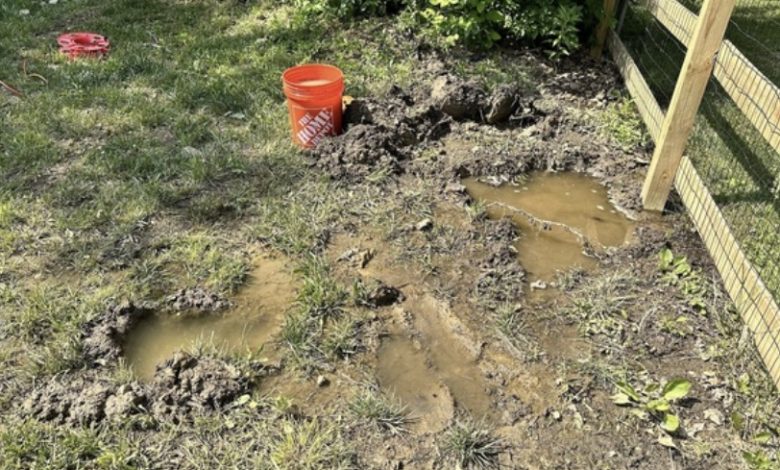For many, the Heinz ketchup bottle is a staple in kitchens and restaurants worldwide. But have you ever noticed the small ‘57’ embossed on its neck? This seemingly random number has puzzled consumers for decades, leading to all sorts of speculation.
Is it the number of ingredients? The number of countries Heinz operates in? Or just a decorative element? The truth is even more fascinating. Understanding the story behind the ‘57’ not only deepens our appreciation for Heinz products but also provides a glimpse into one of the most brilliant branding strategies in the food industry.
The Origins of the ‘57’ and Its Historical Significance

The famous ‘57’ traces back to Henry J. Heinz, the founder of the H.J. Heinz Company in the late 19th century. In 1896, while riding on an elevated train in New York, he noticed an advertisement for “21 Styles of Shoes.” This marketing tactic intrigued him—he believed a number could create a sense of variety and exclusivity.
At the time, Heinz was producing more than 60 different products, yet he deliberately chose ‘57’ as the magic number. Why? Simply because he liked how it sounded. He considered it to be memorable and catchy, creating the now-iconic slogan “57 Varieties.”
Though the number never reflected the actual product count, it quickly became synonymous with quality, variety, and innovation—a clever marketing move that stood the test of time.
Video : The Story Behind Heinz Ketchup
The Evolution of Heinz Branding and the Role of the ‘57’
The ‘57’ Varieties branding became a key element of Heinz’s identity, reinforcing the idea of endless product diversity and consistent quality. Over the decades, Heinz introduced hundreds of products, but the number 57 remained untouched—a symbol of its legacy.
From advertisements to packaging, the ‘57’ appeared everywhere, making it an instantly recognizable brand marker. As Heinz expanded across the globe, the ‘57’ stood strong, creating an emotional connection with consumers who associated it with trust and excellence.
Even today, despite Heinz offering over 5,700 products worldwide, the company still proudly displays ‘57 Varieties’—proving that a great marketing idea never dies.
How to Use the ‘57’ to Get Ketchup Out Smoothly
Beyond branding, the ‘57’ on the Heinz bottle serves a hidden practical purpose—but few people know about it!
If you’ve ever struggled with getting ketchup out of a glass bottle, you’re not alone. Many resort to shaking, squeezing, or even using a knife to scoop it out. However, Heinz secretly built a solution into the design.
Here’s the trick:
- Locate the ‘57’ on the bottle’s neck.
- Tilt the bottle at an angle.
- Firmly tap the ‘57’ with your hand.
This spot is what Heinz calls the “sweet spot”, designed to optimize the flow of ketchup. Instead of pounding the bottle’s bottom, applying gentle pressure at this point breaks the vacuum seal, allowing ketchup to slide out smoothly and effortlessly.

Common Misconceptions About the ‘57’ on Heinz Bottles
Despite its clear marketing history, many people have come up with their own interpretations of what the ‘57’ actually means. Here are a few of the most common misconceptions:
- “The ‘57’ represents the number of ingredients in Heinz ketchup.”
- False! Heinz ketchup actually contains only a handful of ingredients, including tomatoes, vinegar, sugar, and spices.
- “It refers to the number of countries where Heinz products are sold.”
- While Heinz is available in over 200 countries, the number ‘57’ was chosen long before the brand expanded globally.
- “There were originally 57 varieties of Heinz ketchup.”
- Another myth! Heinz has always sold a wide range of products beyond ketchup, even in its early days.
This confusion highlights the power of branding—when something is marketed well, people attach meaning to it, even if it isn’t factual!
Video : How Heinz Tomato Ketchup Is Made
The Cultural Impact of the ‘57’ in Popular Media
Over time, the ‘57’ on Heinz bottles has become a cultural icon, appearing in movies, TV shows, and even everyday slang.
- It has been referenced in classic films and TV series, symbolizing nostalgia and American food culture.
- Many comedians and talk show hosts have joked about the Heinz bottle struggle, making it a fun pop culture reference.
- The ‘57’ has even inspired parodies and product adaptations, proving its impact beyond just the kitchen.
Few marketing gimmicks have lasted over a century, but the ‘57’ remains one of the most recognizable numbers in branding history.
Why the ‘57’ Still Matters Today
Heinz has evolved significantly since its founding, with new product innovations and marketing strategies. However, one thing has never changed—the ‘57’.
This small, seemingly random number continues to:
- Reinforce Heinz’s long-standing heritage
- Create instant brand recognition worldwide
- Add a fun and interactive element to the product
- Spark curiosity among new generations of consumers
Even as Heinz bottles change with time—moving towards squeeze bottles and new packaging—the ‘57’ will likely always remain, ensuring its place in branding history.

Conclusion: The Enduring Legacy of the ‘57’ on Heinz Ketchup Bottles
At first glance, the ‘57’ on a Heinz ketchup bottle might seem like just another design detail. But in reality, it’s a brilliant marketing move, a historical symbol, and a hidden functionality trick all in one.
From its origins in 1896 to its modern-day impact, the ‘57’ has remained an iconic part of Heinz’s identity, representing variety, quality, and tradition.
Next time you reach for a Heinz ketchup bottle, take a moment to appreciate the history and branding genius behind that small embossed number. And if you’re struggling to get the ketchup out? Just tap the ‘57’ and let Heinz’s century-old secret work its magic!
Arrogant Neighbor Fills In My Pond – My Clever Retaliation Teaches Him Not to Underestimate an Elderly Lady

The grandchildren adore frolicking in it, and sometimes I jest they might favor the pond over me!
All was serene until Brian became my neighbor five years ago. Right from the start, he was troubled by my pond.
“Margaret!” he’d shout from beyond the fence. “Those frogs disrupt my sleep! Can’t you quiet them down?”
With a grin, I’d respond, “Oh, Brian, they’re merely serenading you. No charge at all!”
He continued to grumble. “What about the mosquitoes? Your pond is a breeding ground!”
“Now, Brian,” I’d retort, “my pond is spotless. Perhaps those mosquitoes are from the clutter in your own yard.”
He’d storm off, and I assumed he’d adjust over time. However, I misjudged.
One day, I took a short trip to visit my sister, expecting nothing more than leisurely chats and card games. I returned to a shocking sight that chilled me to the core.
Arriving home, the familiar glint of water was missing, replaced by soil. Heart plummeting, I rushed from my car.
My neighbor, kindly Mrs. Johnson, approached hastily. “Margaret! Thank goodness you’re here. I tried to halt them, but they claimed to have authorization!”
“Stop whom? What authorization?” I stammered, fixated on the muddy remnant of my once-beloved pond.
“A team arrived yesterday, tasked by a company to drain and fill your pond,” Mrs. Johnson explained. “I protested that you were away, yet they presented official documents!”
Feeling betrayed, I realized twenty years of cherished memories had vanished overnight. I knew who was responsible.
“Brian,” I clenched my fists, seething.
“What will you do?” Mrs. Johnson inquired, her expression laden with concern.
I straightened up. “Well, I’ll show him why you shouldn’t trifle with a woman like Margaret!”
Firstly, I contacted my family. My daughter Lisa was incensed. “Mom, this is unlawful! We should inform the authorities!”
“Just wait, dear,” I counseled.
“Let’s gather evidence first.”
Then, my perceptive granddaughter Jessie reminded, “Grandma! What about the wildlife camera in the oak tree? It might have recorded something!”
Indeed, that camera captured our ace in the hole.
The footage unmistakably showed Brian, directing the team to destroy my pond. He seemed pleased with his stealthy mischief.
“Caught you,” I smirked.
Brian presumed I would overlook his actions due to my age and solitude. He underestimated my resourcefulness.
I immediately phoned the local wildlife conservation office.
“Good day,” I began politely. “I need to report the ruin of a protected natural area.”
The agent sounded puzzled. “Protected area, ma’am?”
“Absolutely,” I continued. “My pond hosted an endangered fish species, registered with your office years ago. And it’s been filled in without any lawful clearance.”
The conservation office doesn’t take such matters lightly.
Shortly, they were at Brian’s doorstep, imposing a hefty fine that surely made him wince.
“Gentlemen, we’re here concerning the illegal obliteration of a protected site on your neighbor’s land,” they informed Brian.
Brian blanched. “What? Protected site? It was merely a pond!”
“A pond that housed a recognized endangered fish species, Mr. Thompson. You authorized its destruction without proper consent.”
“This is absurd!” Brian protested. “That old pond was an eyesore! I was cleaning up the neighborhood!”
“Unfortunately, that ‘cleanup’ has resulted in a $50,000 penalty for breaching environmental laws,” they countered.
Brian was aghast. “$50,000? You must be joking! That pond was—”
I savored his dismay from afar, but my plans were not yet complete.
I called my grandson Ethan, a sharp attorney in the city.
“Ethan, dear,” I said. “How about assisting your grandmother in dealing with a neighborhood tyrant?”
Eager to aid, Ethan swiftly served Brian with legal papers for property damage and emotional harm.
While I could have stopped there, one more move remained.
Brian’s wife Karen, who always seemed reasonable, returned from work one evening, and I seized the opportunity for a candid talk.
“Evening, Karen,” I greeted her. “Can we chat for a moment?”
She nodded, weary yet accommodating. “Of course, Margaret. What’s troubling you?”
Over tea, I unveiled the entire saga about the pond – its origins, the joyful memories, and the wildlife it supported.
Karen’s expression shifted from bewilderment to shock. “Margaret, I was unaware,” she exclaimed. “Brian claimed the city mandated the pond’s closure for safety!”
“Well,” I reassured her, patting her hand. “Now you understand the full story.”
Subsequently, the neighborhood was abuzz, and Brian vanished for a while after Karen confronted him about his deceit.
One morning, the buzz of machinery woke me. Peering outside, I was astonished to see a team working in my yard under Karen’s supervision.
“Morning, Margaret. I hope you don’t mind, but I thought it was time to rectify things,” Karen greeted me as the crew worked to restore my pond.
Karen confided about Brian’s other questionable dealings. “This was just him venting his frustrations,” she shared softly.
With the pond reinstated, the environmental charges were withdrawn. Ethan persuaded me to drop the lawsuit as well, always the diplomat.
As for Brian, he disappeared out of state, humbled and defeated. Karen, now a frequent visitor, helped me care for the revived pond, grateful for the chance to make amends.
One serene evening by the restored waters, Karen mused, “Margaret, I never imagined I’d appreciate Brian’s mistake.”
Curious, I asked, “Why is that?”
She grinned, clinking our iced tea glasses. “If he hadn’t interfered, I might never have discovered such an incredible neighbor.”
Here I am, 74 and invigorated, with a rejuvenated pond, a new ally, and a tale for future family gatherings. Life always surprises, doesn’t it?
And if there’s a moral here, it’s never to underestimate a grandmother with a resolve and a competent attorney!



Leave a Reply